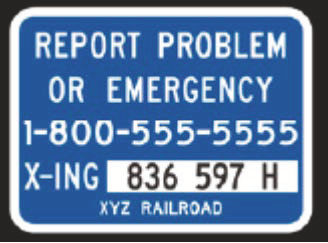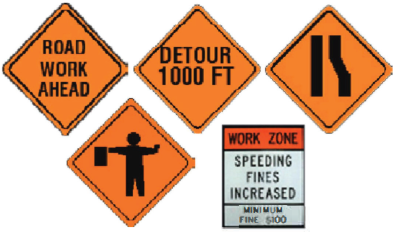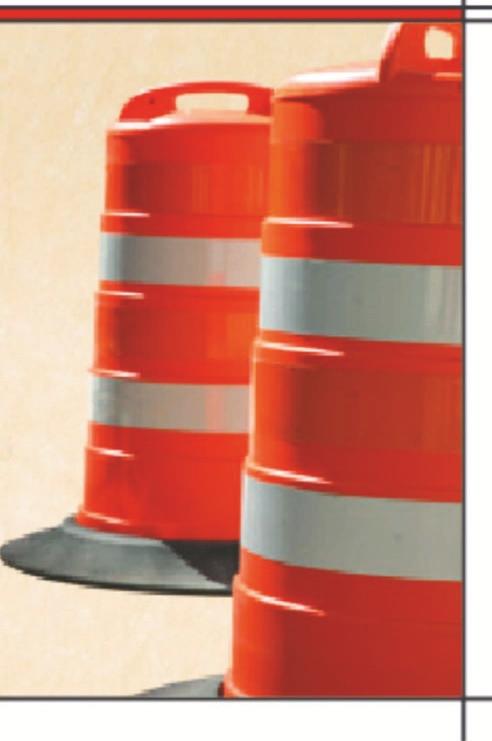
Section 5 Continued: Keep Right Except to Pass
Keep Right, Except to Pass
The "Slow Poke" Law (House Bill 459)
Slower drivers must move out of the passing lane (most left-hand lanes) and over to the right to allow faster-moving traffic to proceed. Regardless of the speed you are traveling, you must move from the lane when faster traffic is approaching. The only exceptions are:
- When traffic conditions make it necessary to drive in the passing lane;
- When inclement weather, obstructions, or hazards make it necessary to drive in the passing lane;
- When compliance with a law of this state or with an official traffic control device makes it necessary to drive in the passing lane;
- When your vehicle must be driven in the passing lane to exit or turn left;
- When it is necessary to pay a toll or use a pass on toll highways;
- Authorized emergency vehicles engaged in official duties; or
- Vehicles engaged in highway maintenance and construction operations.

Backing Up
- Before backing, check all sides of your vehicle to make sure it is safe to do so. You should turn your head and look over your right shoulder while backing; do not depend on your mirrors;
- For buses and large vehicles, the driver should use all mirrors and utilize a reliable person to observe and direct while backing the vehicle.
Traveling Speed
Super Speeder
Any driver convicted of speeding 75 mph or more on a two-lane road or 85 miles per hour or more on any road in Georgia, will be assessed a $200 state fee. The state fee will be in addition to any local fines imposed in the jurisdiction where the speeding offense occurs. Failure to pay the state fee on time will result in a license suspension and additional $50 reinstatement fee.
Speed Limits
Maximum traveling speeds are determined based on the following general rules in Georgia unless otherwise posted:
- 30 miles per hour in any urban or residential district;
- 35 miles per hour on an unpaved county road;
- 70 miles per hour on a rural interstate;
- 65 miles per hour on an urban interstate or on a multi-lane divided highway;
- 55 miles per hour in all other areas.
These are only general rules. Local jurisdictions, the Georgia Department of Transportation,or the Georgia Department of Public Safety may deem it necessary to adjust speed limits based on local conditions, whether temporary or permanent.
Always watch for speed limit signs while driving. Some areas, such as school zones or construction zones may be posted for lower maximum speed limits at certain times of the day or for a short period of time. It is important to pay close attention to road signs while driving to ensure that when you approach a speed zone, whether temporary or permanent, you will have sufficient time to adjust your speed accordingly.
Driving Too Slowly
Drivers are prohibited from driving a motor vehicle at such a slow speed as to impede the normal and reasonable movement of traffic except when a reduced speed is necessary for safe operation. On road with two or more lanes, drivers cannot continue to operate a motor vehicle in the passing lane if that driver is being overtaken by a motor vehicle traveling at a higher rate of speed from behind. Penalties include fine up to $1000 and/or 3 points on the driving record.
When there are two or more lanes for traffic moving in the same direction, slower vehicles should use the right lane except when passing or making a left turn. Driving too slowly is dangerous because it impedes the regular flow of traffic. Minimum speed limits are posted on certain highways. If you are unable to drive at the minimum speed, you should seek an alternate route.
Railroad Crossings

You must always stop within 50 feet, but not less than 15 feet, from the nearest rail of a railroad crossing when any of the following apply:
- The signal is flashing;
- The crossing gates are lowered;
- A flagman is giving a signal;
- A train is approaching so closely as to create an immediate hazard;
- A train gives a warning signal and is an immediate hazard due to its speed or nearness to the crossing;
- A stop sign is posted.
Under no circumstances should a motorist drive through, around or under any crossing gate while the gate is lowered. After stopping, remain stopped until all tracks are clear, all railroad crossing warning signals stop flashing, the crossing gates are raised, and it is safe to proceed.
7 Steps for Safety at Highway-Rail Grade Crossings:
- Approach with care.
- Prepare to stop.
- Look both ways and listen carefully.
- If it won't fit, don't commit. Do not enter a crossing unless you can drive completely through without stopping!
- Look again.
- Cross tracks with care.
- Keep going once you start.
If your vehicle stalls on the tracks, do the following:
- Get out immediately
- Move away
- Locate Emergency Notification Systems (ENS) sign containing emergency contact information.
- Call for help! Tell them a vehicle is on the tracks.

Highway Work Zones
In an effort to minimize inconvenience, the Georgia Department of Transportation (GDOT) conducts most road construction and maintenance without closing roads to traffic. This poses a traffic hazard to drivers and their passengers, as well as the crew members working on the road. Over half of all fatal injuries to road workers are caused by being struck by a motor vehicle, and a third of these by vehicles intruding into the work space. Since 1973, 169 GDOT workers have lost their lives in work zones. However, motorists are more likely to be killed or injured in work zone crashes than GDOT workers. The general public accounts for 82% of work zone fatalities nationwide.
Highway work zones are defined as portions of a highway or street where construction, reconstruction, or maintenance work is being done to the road, its shoulders, or any other areas near the roadway. This definition also includes mobile work such as underground and overhead utility maintenance, snow removal, and land surveying activities. Highway work zones are set up according to the type of road and the work to be done on the road. Signing, roadway markings, and flaggers are used to direct drivers safely through work zones or carefully marked detours. Motorists are responsible for knowing how to read and react to these directions. Paying attention and driving cautiously and courteously are the most important steps to preventing crashes while driving through a work zone. Watch for the color orange. It means road work.
Obey the Signs
Warning signs in work zones have an orange background and black letters or symbols. They are used with other traffic control devices or flaggers to help direct traffic safely through work areas and to protect drivers, their passengers, and highway workers.
Reduce Your Speed
For safety reasons, the speed limit in most work zones is reduced. If the speed limit is not reduced in a work zone, drivers should obey the normal posted speed limit for the road on which they are traveling, but be more cautious of road conditions, lane position, and the presence of workers.
Advisory speed limits are used to identify safe speeds for specific conditions within a work zone. These black and orange signs are always used with warning signs. Official speed limit reduction requirements will be indicated with the standard black and white speed limit signs. Motorists who disobey regulatory speed limits in a work zone may be found guilty of a misdemeanor of a high and aggravated nature and will be punished by a fine of not less than $100.00 nor more than $2,000.00, or by imprisonment for a term not to exceed 12 months, or both.
Obey Flaggers
Flaggers are people used to direct traffic through and around work zones. In a work zone, a flagger has the same authority as a regulatory sign. Do not disobey a flagger's traffic control directions.
Yield to Amber Lights in Work Zones
Work vehicles and heavy equipment will typically have flashing or revolving amber lights.You must yield the right-of-way to these vehicles. Reduce your speed as you approach any work zone where vehicles have amber lights displayed.
Adjust Your Lane Position
Travel lanes are likely to be closed in work zones, and lane patterns may change as the work progresses. Sometimes, workers must operate within inches or feet of an open lane of traffic. When lanes are closed or narrowed, or workers are operating on the roadway near traffic, change lanes away from them if possible or shift slightly within the boundaries of your lane to give added distance between your vehicle and the workers. This will provide extra protection for you, your passengers and the workers along the roadway.
Yield to Mobile Work Vehicles
Some road work can be performed without actually closing lanes of travel. Pavement maintenance, debris removal, paint striping, utility work, and snow removal are examples of work accomplished while moving in traffic. Vehicles used in performing this type of work will have flashing amber lights and may have flashing arrows directing traffic to merge left or right. The vehicles may also display signs for the purpose of directing traffic or indicating hazardous conditions.
These vehicles usually work at very slow speeds, such as 5 miles per hour, and may occasionally be stationary in the road way. For your safety, and the safety of others, slow down, yield the right-of-way to these work vehicles, and follow any directions displayed by the work vehicles.

Work Zone Driving Tips

When you travel through a work zone, remember these four tips:
- Reduce your speed.
- Watch for speed limit signs. Fines are increased In most work zones.
- Adjust your lane position away from workers.
- Prepare for the unexpected!
Do your part to help protect the men and Women who work hard to make Georgia roads among the best in the nation.